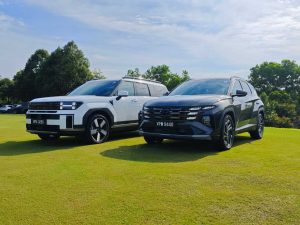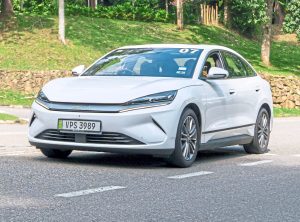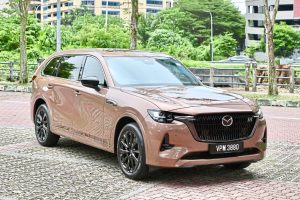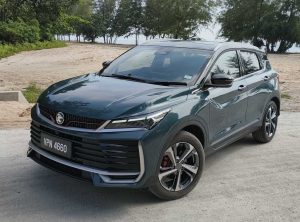HONG KONG: As China’s assault on the world’s automotive industry gathers speed, Japan’s national champions are emerging as some of the biggest victims.
In China itself, the world’s largest car market, Japanese automakers are fighting for survival as local competitors flood showrooms with wave after wave of electric vehicles.
The same Chinese companies are pushing into Southeast Asia, rapidly gaining ground in what has long been a stronghold for legacy brands like Toyota, Honda and Mitsubishi.
Japanese automakers suffered the biggest market share losses of any carmakers between 2019 and 2024 in China, Singapore, Thailand, Malaysia and Indonesia, according to an exclusive Bloomberg analysis of vehicle sales and registration data.
In China, all six Japanese automakers tracked by Bloomberg have ceded ground – even Toyota’s sales and output have hit a plateau.
In Southeast Asia, where loyalty to Japanese marques is so strong that almost every car in Indonesia as recently as 2019 was from the nation, Chinese brands are chipping away.
That’s especially the case in Thailand and in Singapore, where Japanese carmakers’ shares have been eroded down to 35% from more than 50% in 2019.

While Toyota, the world’s No. 1 carmaker by volume, is still holding its ground in some segments like pickups, the overall picture is worrying for companies once considered pioneers in efficiency and reliability.
The loss of market share in Asia also portends a potential wider slide in Europe and the US, although Chinese automakers largely don’t sell passenger cars there due to punitive tariffs.
As a group, Japanese carmakers have been slow to shift to fully electric vehicles. That could cost them dearly as they fall further behind in an industry where winners are being minted based on cutting-edge battery technology and smart software.
In Southeast Asia, busy streets and highways long dominated by Nissan and Mazda marques are beginning to see new grilles and badges.
Toyota’s enduring edge in Southeast Asia comes from its production capacity within the region, where it makes a number of gasoline cars with bigger engines that are popular among local customers.
Thailand and Indonesia together accounted for almost 10% of the some 11 million vehicles it manufactured in 2023.
And yet in Jakarta, where Toyotas remain the most visible brand on the capital’s roads, Nissans are now almost an endangered species.
Earlier this month, Nissan reported a sharp downturn in profit fuelled by an outdated lineup, elevated spending on sales incentives and a lack of hybrids in North America, leading it to slash jobs and production.


BYD ranked as Indonesia’s No. 6 brand by sales last month, after only delivering its first batch of cars to customers in July.
Staff at BYD’s flagship showroom in Jakarta said the Seal, a mid-sized electric hatchback that starts from US$40,000 (RM178,000), is most popular.
To fight back, Japanese brands are investing in partnerships and long-term projects to develop in-vehicle software, solid state batteries and other technologies they need to regain the upper hand.
Earlier this year, Toyota unveiled prototypes of a so-called carbon neutral combustion engine that could help it further improve its hybrid technology.
It’s also building its own software platform to rival the luxurious features found in Chinese EVs.
Honda, Nissan and Mitsubishi are meanwhile ironing out a partnership formed this year to collaborate on software and EV infrastructure.
The strategy is paying off, for now, in North America, where a downturn in EV growth over the past two years has seen a resurgence in the popularity of hybrids, a technology pioneered by Nissan and Toyota.
But in China, the EV capital of the world, that approach is costing them dearly.

Japanese carmakers have been reluctant to bet on electric vehicles, leading to some of the biggest sales drops among peers
Japan’s reputation for production on a mass scale is also slipping. While the island nation boasted more than a fifth of global car production two decades ago, that figure has now fallen to 11%.
China is the world’s largest hub for automobile manufacturing.
But tariffs on made-in-China EVs that are exported to Europe and the US are forcing many companies to consider localising production to escape punitive levies, and pushing BYD and others further into expanding markets to satisfy their global ambitions.
China’s advantage in low-cost batteries and firms’ ability to set up supply chains overseas as they target other markets could give them an edge in Southeast Asia, the Middle East and Africa, according to Bloomberg Intelligence.
While Chinese brands have been on the offensive in Southeast Asia and Africa since before tariffs took effect, Bloomberg Intelligence senior auto analyst Tatsuo Yoshida sees them doubling down. “It’s likely they’ll strengthen that push,” he said.












